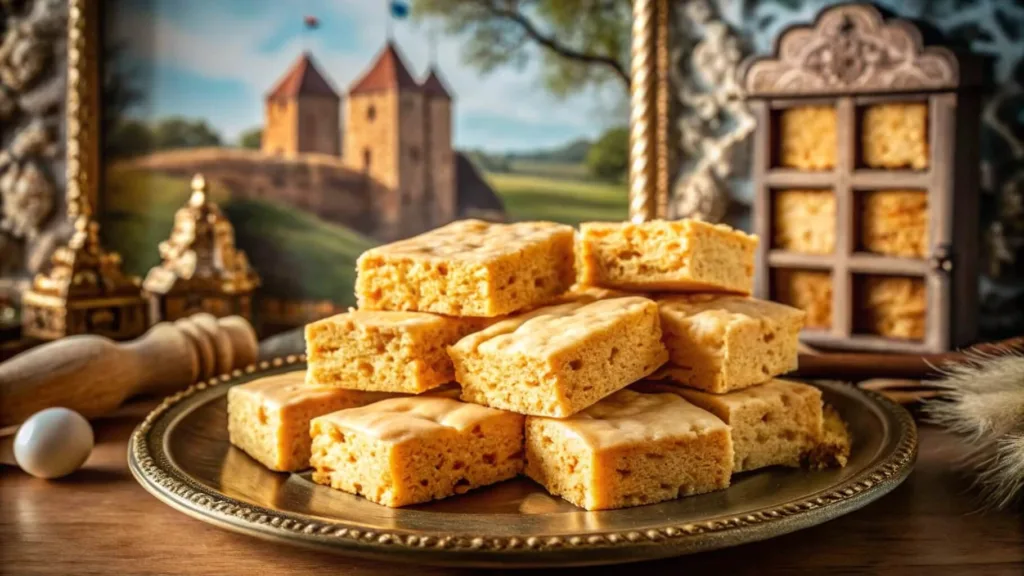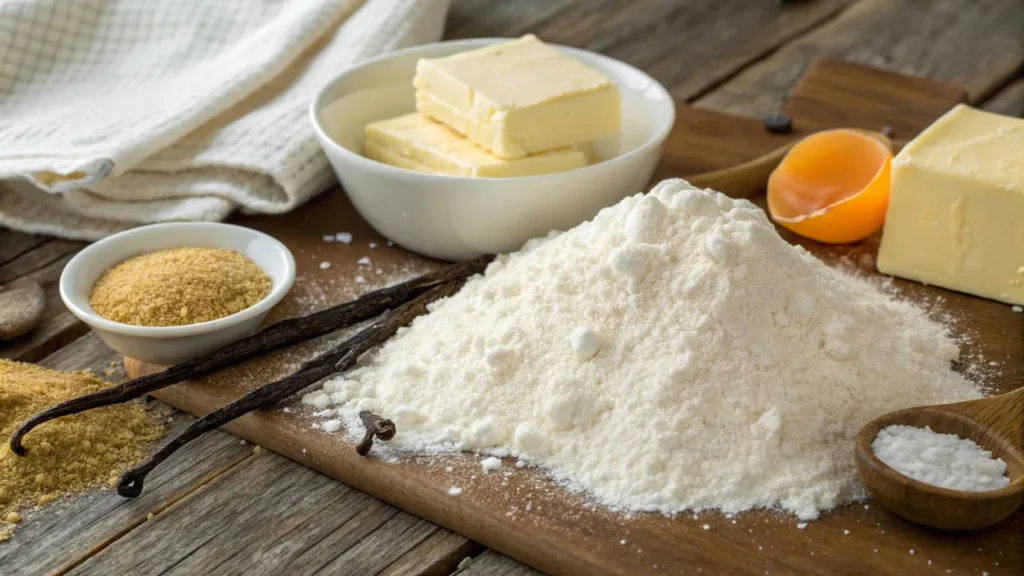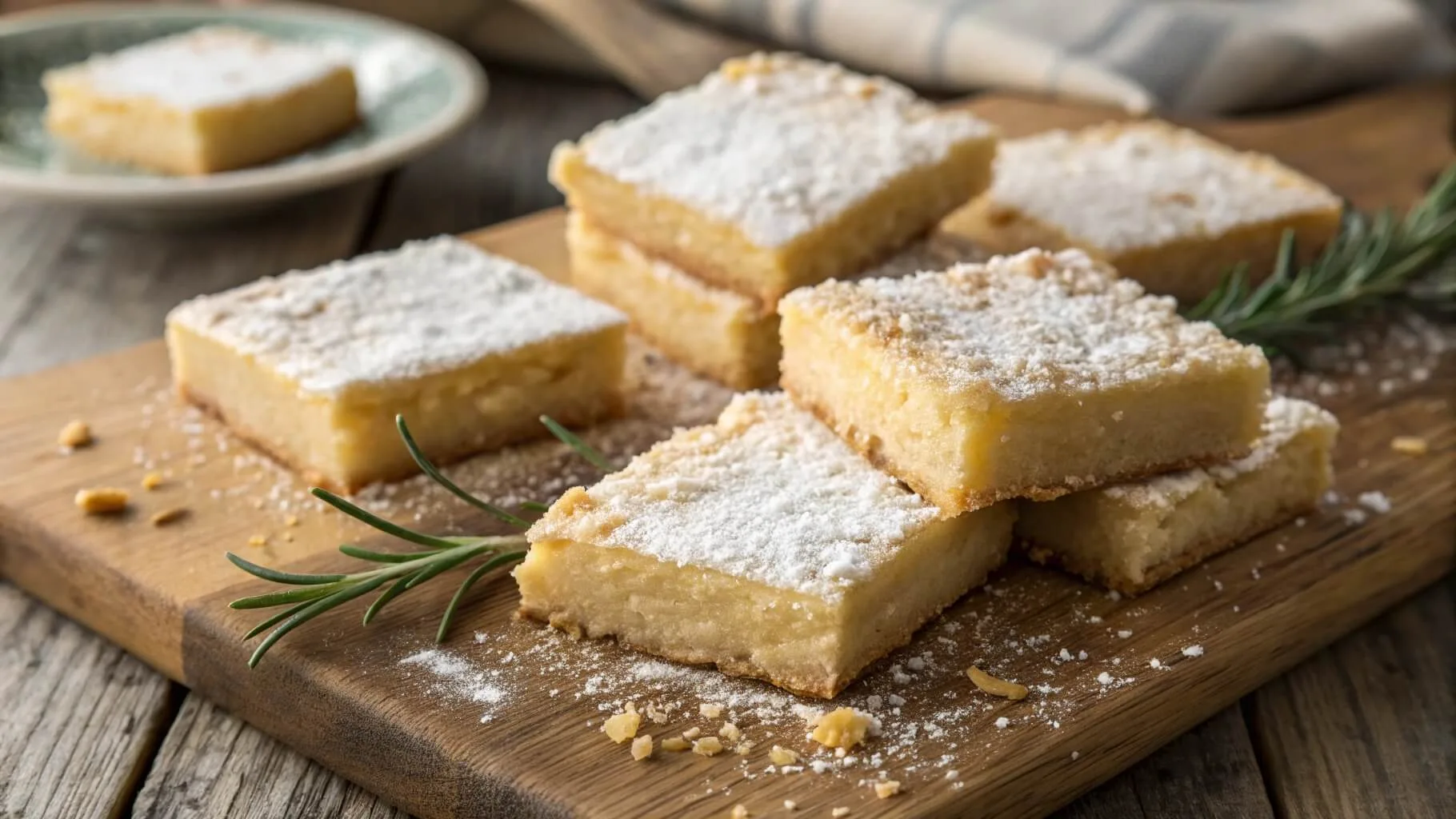Imagine biting into a tender, crumbly shortbread bar that melts in your mouth. This classic dessert is a favorite in many bakeries. With the right techniques, you can make professional-quality shortbread bars at home. Shortbread bars come in many flavors, but the secret to the perfect texture is in the technique.
Using the right ingredients and mastering shortbread bar baking can change your baking game. By following simple steps and using the right tools, you can make shortbread bars that taste great and look good. Whether you’re new to baking or have experience, making shortbread bars is a skill you can learn. With the right techniques, you can impress everyone with your melt-in-your-mouth shortbread bars.
Main Points
- Mastering the art of shortbread bar baking requires the right techniques and ingredients.
- Using the right tools and equipment can help you achieve professional-quality results.
- Shortbread bars can be made with a variety of ingredients and flavors to suit your taste preferences.
- Practicing patience and following a few simple steps can help you create melt-in-your-mouth shortbread bars.
- Baking techniques, such as temperature control and ingredient measurement, are crucial to achieving the perfect texture.
- With the right guidance, you can create shortbread bars that are both delicious and visually appealing.
The Heritage Behind Classic Shortbread Bars
Shortbread history is deeply rooted in Scottish baking traditions. It dates back to the 12th century. Initially, it was made from leftover bread dough that was dried and baked until crisp.
Over time, the recipe evolved. It now includes butter, sugar, and other ingredients. This resulted in the traditional shortbread we know today.
Scottish baking has shaped shortbread’s characteristics. The traditional recipe has just a few ingredients: butter, sugar, flour, and salt. This simplicity lets the natural flavors of the ingredients shine through.
Evolution of Shortbread Bars Recipes
While traditional shortbread is still loved, modern variations have also emerged. Some recipes add nuts, chocolate chips, or dried fruits. These additions create unique flavor combinations.

Why Shortbread Endures
Shortbread remains a beloved classic despite changes in baking trends. Its rich history, simple recipes, and versatility keep it popular. Whether made traditionally or with innovative ingredients, shortbread delights people worldwide with its buttery flavor and crumbly texture.
Essential Ingredients for Perfect Shortbread Bars
Quality ingredients are key to making perfect shortbread bars. Ingredients like quality butter and fine sugar are crucial. They affect the texture and flavor of the shortbread.
Choosing the best ingredients is important. Here are some tips:
- Quality of the butter: Choose butter with high fat content for a tender and flavorful shortbread.
- Type of sugar: Fine sugar is needed for a smooth, even texture in shortbread bars.
- Type of flour: The right flour helps create a delicate, crumbly texture in the shortbread.
By picking the right ingredients, like quality butter and fine sugar, bakers can make delicious shortbread bars.

Kitchen Tools and Equipment You’ll Need
To bake shortbread bars successfully, you need the right tools. This includes mixers, measuring cups, and spoons. Shortbread pans are also essential for the perfect shape and texture.
There are also optional tools that can help. A pastry blender makes mixing the dough easier. A silicone spatula is great for scraping the bowl. And a wire rack helps cool the bars.
Must-Have Baking Items
- Mixers: Stand or handheld, for creaming butter and sugar
- Measuring cups and spoons: For accurate ingredient measurement
- Shortbread pans: Designed for baking shortbread bars
Optional but Helpful Tools
- Pastry blender: For mixing the dough
- Silicone spatula: For scraping the sides of the bowl
- Wire rack: For cooling the bars
Pan Selection Guide
Choosing the right pan is important for baking shortbread bars. Look for a rectangular pan with a non-stick coating. This makes it easy to remove and clean the bars. Shortbread pans come in different sizes, so pick one that suits your recipe and needs.
Mastering the Basic Shortbread Bars Recipe
To master the basic shortbread bars recipe, it’s key to follow a trusted shortbread recipe. A basic recipe usually has simple ingredients like butter, sugar, and flour. It’s important to use top-quality ingredients and exact measurements when making shortbread.
Here are some tips for mastering shortbread:
- Use room temperature butter for a tender texture
- Don’t overmix the dough to prevent a dense shortbread
- Chill the dough before baking to help the shortbread retain its shape
By following these tips and using a reliable shortbread recipe, home bakers can achieve perfect shortbread bars. These bars will have a delicate texture and rich flavor. Mastering shortbread is all about paying attention to detail and practicing, so don’t get discouraged if it takes a few tries to get it right.
With patience and persistence, anyone can master the basic shortbread bars recipe. And then, enjoy delicious homemade shortbread.
The Science Behind Tender Shortbread Bars
Understanding shortbread science is key to making it right every time. The temperature of the butter is very important. It makes the shortbread tender and crumbly. Also, the type of flour used can change the taste and texture of the shortbread.
Shortbread’s tenderness comes from the right butter temperature and flour choice. Knowing these secrets helps bakers make the best shortbread. For instance, using top-quality flour and the right butter temperature makes it more tender and tasty.
Role of Butter Temperature
Butter temperature is crucial in shortbread making. If the butter is too soft, the shortbread can be dense and greasy. If it’s too hard, it becomes too crumbly. The best temperature for butter is between 72°F and 76°F (22°C to 24°C).
Flour Selection Impact
Choosing the right flour is also important. Different flours can make the shortbread more tender or crumbly. Cake flour makes it delicate, while all-purpose flour makes it robust. The flour can also change the flavor, with some giving a neutral taste and others a stronger taste.
Sugar Crystal Size Matters
The size of sugar crystals also matters in shortbread. Bigger crystals make it crunchy, while smaller ones make it smooth. By controlling the sugar size, bakers can make shortbread that suits their taste and texture preferences.
Creative Flavor Variations for Your Shortbread Bars
Trying out different flavors can make traditional shortbread even better. You can add nuts or dried fruits for a simple twist. Or, you can mix in different extracts or spices for something more complex. This way, bakers can find their favorite flavors and enjoy the process of creating.
Some popular flavor ideas include:
- Adding a hint of citrus with lemon or orange zest
- Incorporating chopped nuts like almonds or walnuts for added texture
- Using different extracts like vanilla or almond to create unique flavor profiles
These ideas can help bakers make shortbread that tastes great and looks good too. By trying out different mixes, bakers can come up with their own special shortbread flavors. It’s a fun and rewarding way to get creative in the kitchen.
If you want to make your shortbread even more special, try new and exciting flavors. A bit of creativity and experimentation can lead to shortbread that’s truly one-of-a-kind.
Troubleshooting Common Shortbread Problems
Even with the best recipe and techniques, issues can arise during the baking process. Common shortbread problems include texture issues, such as a dense or crumbly texture. Baking temperature adjustments can also affect the final product’s consistency. Storage-related challenges, like moisture absorption, can impact the shortbread’s freshness and texture.
To address these shortbread problems, troubleshooting is essential. This involves identifying the root cause of the issue and applying the appropriate baking solutions. For example, if the shortbread is too dense, it may be due to overmixing the dough. The solution would be to mix the ingredients just until they come together in a cohesive mass, without overworking the dough.
- Texture issues: adjust the ratio of butter to sugar, or try adding a little more flour to balance the texture.
- Baking temperature adjustments: ensure the oven is at the correct temperature, and consider using an oven thermometer to verify the temperature.
- Storage-related challenges: store the shortbread in an airtight container, and consider adding a desiccant packet to absorb any moisture.
By understanding the common shortbread problems and applying the appropriate baking solutions, home bakers can overcome these obstacles and achieve success in their baking endeavors.
Decorating and Presentation Tips
Shortbread decorating can really make a difference in presentation. A well-presented shortbread bar can make gift giving more special. To get a professional look, try piping borders or making patterns with melted chocolate.
Professional Finishing Touches
To add a professional touch, consider these ideas:
- Use a dusting of powdered sugar for elegance
- Create a pattern with melted chocolate or caramel sauce
- Add fresh fruits or nuts for color and texture
These simple techniques can make your shortbread bars stand out. They’re perfect for gift giving.
Gift-Giving Ideas
Shortbread bars are great gifts for any occasion. The right presentation can make them even more special. Try packaging them in decorative tins or jars, or create a gift basket with different flavors.
Storage and Shelf Life Guidelines
To keep shortbread bars fresh, it’s important to store them right. Place them in an airtight container, away from sunlight and moisture. This way, you can enjoy your shortbread for longer, keeping it fresh.
Here are some tips for storing shortbread:
- Keep the bars in a cool, dry spot to keep them fresh.
- Use an airtight container to stop moisture and other tastes from getting in.
- Freeze the bars to make them last longer, and thaw them when you want to eat them.
By storing shortbread properly, you can keep it fresh and tasty for longer. It’s all about enjoying the best flavor and texture of these treats.
FAQs About Shortbread Bars
1. What is the secret to good shortbread bars?
The secret to making perfect shortbread bars lies in three key factors:
✅ High-Quality Butter – Use unsalted, European-style butter with 82%+ fat content for the best flavor and texture. The butter should be softened but not melted before mixing.
✅ Minimal Mixing – Overworking the dough develops gluten, making the bars chewy instead of crumbly. Mix just until the ingredients are combined.
✅ Low & Slow Baking – Bake at 300-325°F (150-160°C) for 30-35 minutes to prevent overbrowning. Shortbread should be light golden, not brown.
✅ Chill Before Baking – Chilling the dough for at least 30 minutes before baking helps prevent spreading and maintains a tender, buttery texture.
2. What is the difference between English shortbread and Scottish shortbread?
English and Scottish shortbread share similar ingredients but differ in texture, taste, and preparation.
| Feature | English Shortbread | Scottish Shortbread |
|---|---|---|
| Texture | Light, crisp | Crumbly, dense |
| Ingredients | Butter, sugar, flour | More butter, no eggs |
| Shape | Often round or square | Typically thicker and rectangular |
| Sweetness | Slightly sweeter | More buttery than sweet |
✅ Scottish shortbread is denser and crumblier, with a higher butter-to-flour ratio.
✅ English shortbread is lighter, crispier, and sometimes includes eggs or extra sugar.
Both are delicious, but Scottish shortbread is the more traditional version!
3. What are common mistakes when making shortbread bars?
Even though shortbread bars use only a few ingredients, small mistakes can affect the final texture. Here’s what to avoid:
❌ Overmixing the Dough – This develops gluten, making the bars tough instead of crumbly. Mix just until combined.
Check our best gluten-free recipes guide provided everything you need to create delicious gluten-free meals.
❌ Using Too Much Flour – Adding extra flour makes shortbread dry and hard. Always measure correctly using a kitchen scale.
❌ Baking at Too High a Temperature – Shortbread needs a slow bake at low heat (300-325°F / 150-160°C) to achieve a delicate, melt-in-your-mouth texture.
❌ Skipping the Chilling Step – Chilling prevents spreading and improves texture. Always chill for at least 30 minutes before baking.
By avoiding these mistakes, you’ll achieve perfectly tender, buttery shortbread bars every time!
4. What’s the difference between shortbread and butter biscuits?
Shortbread and butter biscuits may seem similar, but they differ in texture, ingredients, and sweetness.
| Feature | Shortbread Bars | Butter Biscuits |
|---|---|---|
| Fat Content | High butter content | Less butter, more flour |
| Texture | Crumbly, delicate | Crisp and slightly chewy |
| Sweetness | Less sweet | More sugar for sweetness |
| Eggs | No eggs | Often contains eggs |
✅ Shortbread bars have higher butter content, making them richer and more delicate.
✅ Butter biscuits are crunchier, sweeter, and often include eggs or leavening agents.
Both are delicious, but if you prefer a buttery, melt-in-your-mouth treat, shortbread bars are the way to go!
Conclusion
Shortbread bars are a timeless, buttery delight that are simple to make yet incredibly rich in flavor. By using high-quality butter, proper mixing techniques, and low-temperature baking, you can achieve the perfect crumbly, melt-in-your-mouth texture every time.
We’ve explored the key secrets, common mistakes to avoid, and the differences between English and Scottish shortbread. Plus, with delicious variations like chocolate-dipped shortbread and caramel Twix bars, there’s always a new way to enjoy this classic treat!
So whether you’re a beginner baker or a seasoned pro, this guide will help you master the art of shortbread bars. Try the recipe, experiment with flavors, and share your favorite shortbread creations with family and friends!

